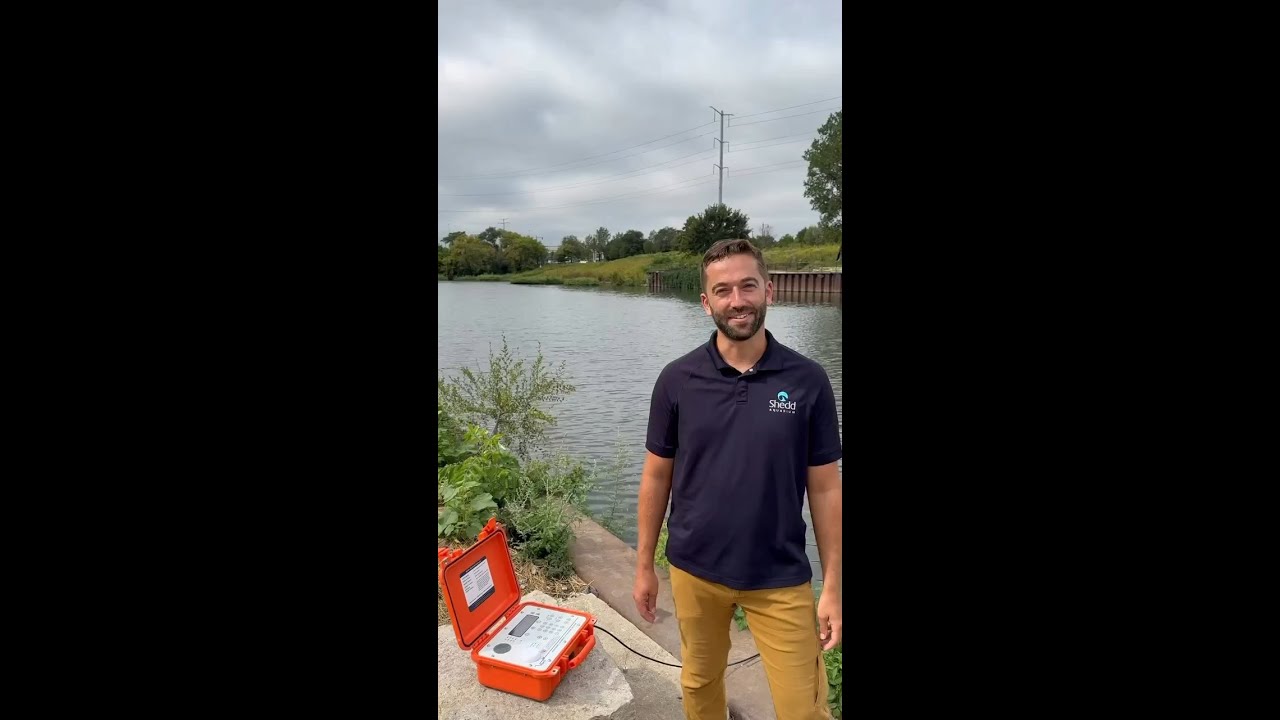Summary:
1. Acoustic telemetry is a groundbreaking technology used to study fish movement in the Chicago River.
2. By placing receivers throughout the river, researchers can track the preferred habitats of different fish species.
3. Shedd Research Biologist Austin Happel, Ph.D., shares insights into the fascinating world of acoustic telemetry and its applications in understanding fish behavior.
Dive into the Mysterious Depths of the Chicago River with Acoustic Telemetry!
Have you ever wondered what lies beneath the surface of the Chicago River? The once-forgotten waterway has become a fascinating subject of study for researchers using a groundbreaking technology called acoustic telemetry. By listening to fish movements through strategically placed receivers, scientists unravel the mystery of their preferred habitats and shed light on the intricate world beneath the city’s iconic skyline. Join us as we dive into the depths of the Chicago River and tune into the captivating research of Shedd Research Biologist Austin Happel, Ph.D.!
Acoustic telemetry is a revolutionary technology that allows scientists to track fish movements using sound signals. Researchers can monitor their exact locations as they swim through the river by implanting tiny acoustic tags within the fish. These tags emit unique and distinguishable signals that can be detected by strategically placed receivers throughout the aquatic environment. This information-rich method presents a new realm of understanding regarding fish behavior and habitat preferences.
Often overshadowed by its towering cityscape, the Chicago River holds a wealth of aquatic life within its depths. With the help of acoustic telemetry, researchers are now uncovering the hidden secrets of this urban oasis. By placing receivers in strategic locations, researchers can track the movements of various fish species, monitoring their preferences for specific habitats and their seasonal migrations. This information is crucial for conservation efforts and managing fish populations within the river.
One of the key players in this research is Dr. Austin Happel, a biologist at Chicago’s iconic Shedd Aquarium. With his expertise in acoustic telemetry, Dr. Happel has been unraveling the mysteries of the Chicago River’s fish populations, making groundbreaking discoveries along the way. Through his work, he has found that certain species, like the smallmouth bass, prefer areas with slower currents and more cover, such as vegetation or structures like docks and bridges. Conversely, other species, such as the common carp, are more adaptable and can thrive in various habitats, including slow and fast-moving waters.
But it is not just fish behavior that Dr. Happel and his team are studying. They are also investigating the impact of environmental factors, such as water temperature and clarity, on fish movements. By analyzing the data collected from the receivers, researchers can uncover patterns and correlations between these variables and fish behavior. This research can provide invaluable insights into how fish communities adapt and respond to environmental changes, further enhancing our understanding of the delicate balance between nature and human impact.
Acoustic telemetry also enables researchers to study the effects of man-made structures, such as dam systems, on fish movements. By tracking fish before and after the placement of barriers, scientists can assess the impact of these structures on migration patterns and identify potential obstacles that hinder the natural flow of fish populations. This research is crucial in designing fish passages or other interventions that can mitigate the effects of human infrastructure on aquatic ecosystems.
The use of acoustic telemetry is not limited to the Chicago River. Similar studies have been conducted in rivers and oceans worldwide, allowing researchers to gather a broader picture of fish behavior and migration patterns. The knowledge gained from these studies can help inform conservation and management strategies, aiding in protecting fish species and their habitats.
So, the next time you find yourself strolling along the banks of the Chicago River or gazing at its mesmerizing waters, take a moment to appreciate the hidden world beneath. Thanks to the groundbreaking research conducted by scientists like Dr. Austin Happel and the power of acoustic telemetry, we can now peek into the lives of the fish that call this urban waterway home. As our understanding of the intricacies of fish behavior deepens, so does our ability to conserve and protect these fragile ecosystems. Let’s continue to explore and uncover the wonders nature offers, even in the heart of a bustling city!
*****
Source Description
Tune into telemetry with Shedd Research Biologist Austin Happel, Ph.D.!
We are learning which habitats fish prefer and when by listening to their movements through receivers placed throughout the Chicago River.


